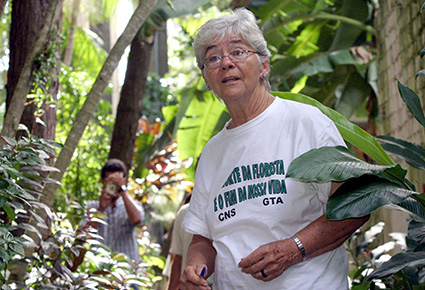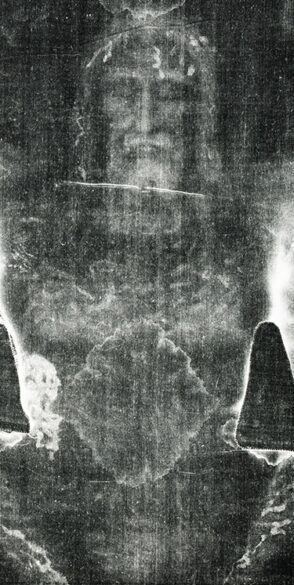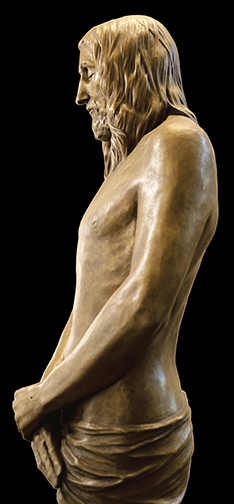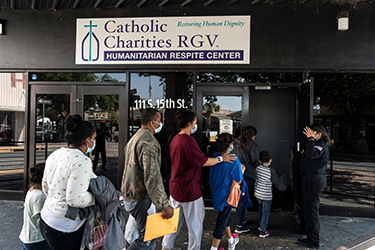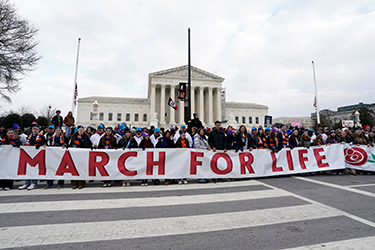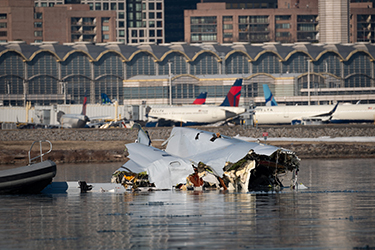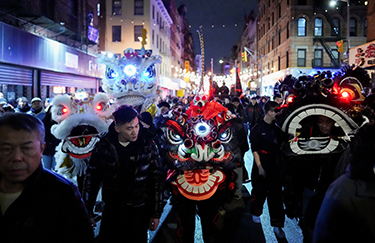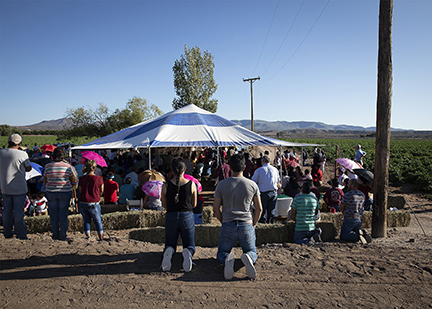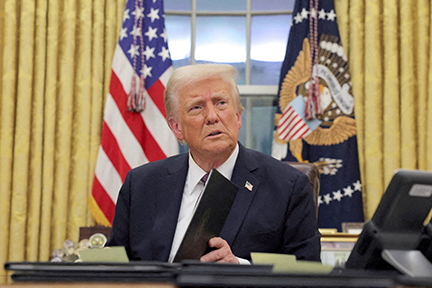By Mark Zimmermann
WASHINGTON (OSV News) — When Washington Cardinal Wilton D. Gregory became the first African American cardinal in the history of the Catholic Church Nov. 28, 2020, some of his thoughts were far from Rome while he received his red hat during the consistory at St. Peter’s Basilica.
He reflected on that moment In a recent interview with the Catholic Standard and Spanish-language El Pregonero archdiocesan newspapers.
“When the Holy Father placed the cardinal’s biretta on my head, the thoughts that filled my heart were thoughts of my own family, my mom and dad struggling to provide a good education for me and my two sisters,” he said Jan. 15. “My wonderful grandmother, Etta Mae Duncan, who was so pivotal in my upbringing. I’ve said this before, she was a domestic. She worked as a housekeeper to provide the opportunity for her grandchildren to get a good education.
“I thought about the sacrifices that people have made in my own life,” he continued, “but also the sacrifices that African American Catholics, Catholics of color, have offered in their fidelity to our church, their love for our church, their faithfulness to the Catholic community that they love and have loved all of their lives.”
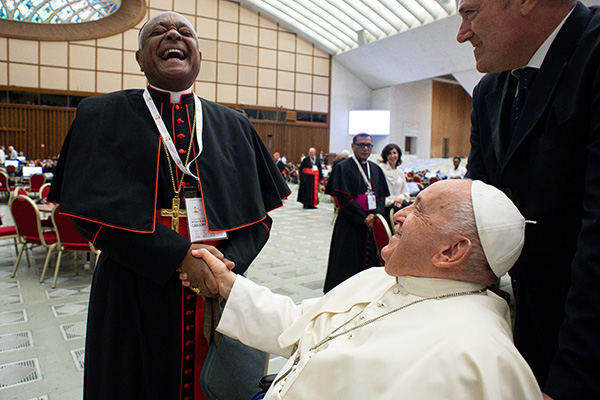
He also thought about history. “How did I get here? How did this moment happen to me?”
And he thought about “how grateful I am to have reaped the harvest of faith that was made possible by people in my own life, but (also by) people that I have never known, but were faithful Catholics who have fallen in love with the Catholic Church and that I just so happened to be the one to reap the benefit of their love and their devotion.”
On Oct. 25, 2020, the morning that Pope Francis named then-Archbishop Gregory as one of 13 new cardinals to be elevated at that Nov. 28 consistory, he said in a statement, “With a very grateful and humble heart, I thank Pope Francis for this appointment which will allow me to work more closely with him in caring for Christ’s Church.”
That morning, Cardinal-designate Gregory celebrated a 250th anniversary Mass for Holy Angels Parish in Avenue, which is located near St. Clement’s Island in Southern Maryland, where the first Catholic Mass in the English-speaking colonies was celebrated in 1634.
After that Mass, he was asked what his elevation to the College of Cardinals meant to him personally, to be the first African American cardinal in the United States, and what that would mean to the nation’s Black Catholics.
Cardinal-designate Gregory’s voice broke slightly as he said, “I’m deeply humbled. I know that I am reaping a harvest that millions of African American Catholics and people of color have planted. I am deeply grateful for the faith that they have lived so generously, so zealously and with such great devotion.”
He said he saw his appointment as “another opportunity to serve and to care for the church and to have the church (of Washington) in closer union with Pope Francis.”
He added, “I hope it is a sign of the continued investment of the church in the work of justice, peace and harmony among people.”
Cardinal Gregory was installed as Washington’s archbishop in May 2019. On Jan. 6, 2025, Pope Francis accepted his resignation; at 77 he is two years past the age at which canon law requires bishops to submit their resignation to the pope. Pope Francis named Cardinal Robert W. McElroy of San Diego as his successor. He will be installed March 11.
Cardinal Gregory became Catholic and was inspired to become a priest after being enrolled in St. Carthage School in his native Chicago in 1958. Young Wilton was baptized and received his first Communion in 1959 and was confirmed later that year.
After graduating from St. Carthage in 1961, he entered the seminary and was ordained a priest for the Archdiocese of Chicago in 1973. He earned a doctorate in sacred liturgy from the Pontifical Liturgical Institute in Rome in 1980.Three years later he was ordained an auxiliary bishop of Chicago; at age 34, he became the youngest U.S. Catholic bishop.
From 1994-2005, Bishop Gregory headed the Diocese of Belleville, Illinois. In 2001, he was elected president of the U.S. Conference of Catholic Bishops after three years as vice president. In 2002, during his term, revelations of clergy sexual abuse and its cover-up erupted, affecting the whole U.S. church. Under his leadership, the bishops implemented the “Charter for the Protection of Children and Young People.”
St. John Paul II appointed Bishop Gregory as archbishop of Atlanta, where he was installed in 2005, and Pope Francis named him as the seventh archbishop of Washington in 2019. Then-Archbishop Gregory became the first African American archbishop of Washington.
In one of his first parish visits as Washington’s new archbishop, he celebrated a Mass at St. Augustine Church, founded in 1858 by free men and women of color, including some who were emancipated from slavery. It is known as the mother church for African American Catholics in the nation’s capital.
When then-Archbishop Gregory appeared in the doorway of St. Augustine Church that morning for the Mass, people there shouted for joy and gave him a spontaneous standing ovation.
In his homily that day, then-Archbishop Gregory acknowledged St. Augustine’s history and “how it is identified with the sacred heritage of African American Catholics.”
“I stand on holy ground, as do all of you when you gather each Sunday for the Eucharist,” he said, adding, “Today a son of the African diaspora stands in your midst as the shepherd of the entire family of faith that is the Archdiocese of Washington.”
After Cardinal Gregory’s elevation to the College of Cardinals was announced in 2020, local Catholics interviewed for a “Black Catholics Voices” multimedia series for the Catholic Standard reacted with joy to his appointment as the first African American cardinal.
Father Robert Boxie III, the Catholic chaplain at Howard University in Washington, said the appointment was a recognition of Cardinal Gregory’s pastoral leadership and contributions to the church in the United States.
It was also a recognition that “the faith, the contributions, the witness, the experience of Black Catholics truly do matter, and that’s an important voice and an important gift to the church universal,” the priest said. “The voice of Black Catholics will be now that much closer to the Holy Father. It will now be in the heart of the Church in Rome, in the Vatican.”
Sister Patricia Chappell, a Sister of Notre Dame de Namur and the former president of the National Black Sisters’ Conference, called Cardinal Gregory’s elevation “a very historic moment,” and praised the new cardinal as “a man who really listens to the people, a man who is steeped in his faith, and a man who will journey with the people.”
As the archbishop of Washington, Cardinal Gregory worked to be a pastor to all the people of the archdiocese, centering his ministry on celebrating Masses at parishes and Catholic schools.
He worked to bring healing in the wake of the clergy abuse crisis and led the archdiocese through the COVID-19 pandemic. Demonstrating Catholic teaching for the dignity of human life in all its stages, Cardinal Gregory celebrated a Youth Mass for Life before the annual March for Life, and he also spoke out against the death penalty.
The cardinal also celebrated an annual Mass honoring the life and legacy of the Rev. Dr. Martin Luther King Jr., and under his leadership, the archdiocese launched a 2020 pastoral initiative, “Made in God’s Image: Pray and Work to End this Sin of Racism,” and a 2021 action plan based on Pope Francis’ “Laudato Si'” environmental encyclical.
“He demonstrated to the church in the United States that Black Catholics have a lot to offer to the church from the gifts God has given us, and he’s an excellent example of that,” said Washington Auxiliary Bishop Roy E. Campbell Jr. who also serves as the president of the National Black Catholic Congress.
In a 2021 interview one year after he was elevated to the College of Cardinals, Cardinal Gregory was asked if being the first African American cardinal posed any challenges.
“I always feel that if I stay close to the Lord in my prayer life, at least (staying) on the right path … being the first is an opportunity to draw the church closer together across cultures and races,” he said.
In his recent interview with the Catholic Standard and El Pregonero, he reflected on the number of opportunities he has had “to be the first,” saying he wants “to make sure that I realize that whatever legacy I leave will be available for the second, for the third, for the fifth, who will, in God’s own time and with God’s own grace, will inherit the responsibilities that I’ve been fortunate enough to have.”
“I hope that my presence in the Archdiocese of Washington, as I was present in Atlanta and in Belleville and in Chicago, I hope that I provided an opportunity for people not just in a sense of pride, but in a sense of opportunity, that the young people can see a world that they can fill with their own dreams and with their own possibilities,” he said.
“I hope that my ministry has lifted the horizons for a lot of our young people, to see as possibilities that generations of young people in the past never even envisioned.”
(Mark Zimmermann is editor of the Catholic Standard, newspaper of the Archdiocese of Washington.)

